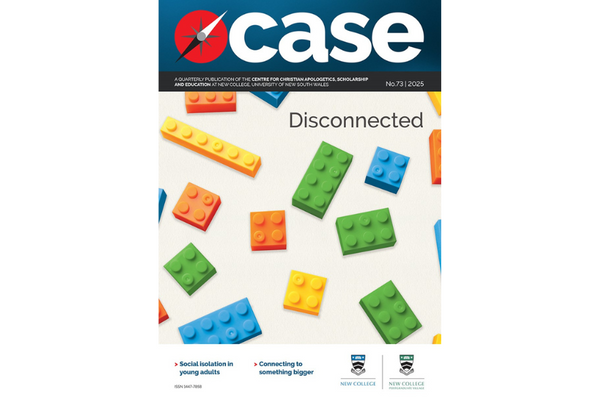Climate Change: Introduction

Bill Peirson
Climate change: A tale of two masters
Each year New College puts on a theatrical performance. In 2017, it was The Servant of Two Masters—a greedy servant thinks that he can double his food intake by taking on two masters. The inevitable happens.
Presumably, Goldoni's spoof was inspired by Jesus' sober warning ‘No one can serve two masters, for either he will hate the one and love the other, or he will be devoted to the one and despise the other. You cannot serve God and money.’ (Mt 6:24)
In our 50th edition of Case Quarterly we engage with climate change. So-called climate change is a modern story about the unintended consequences of industrialisation. The present Intergovernmental Panel on Climate Change assessment report[1] asserts clear human influence on climate systems, corresponding with the highest anthropogenic gas emissions in history.
It is now over 10 years since our Prime Minister, Kevin Rudd, announced climate change to be ‘the greatest moral, economic and environmental challenge of our generation’. Concerns about the global environment are not new. Next month will mark 50 years since the formation of the Club of Rome, a think tank of scientists, economists and industrialists concerned about social, economic and environmental issues that were then perceived to be developing on a global scale. The formation of the Club of Rome led directly to the publication of the seminal The Limits to Growth.[2]
Humankind is now in love with the wealth and benefits that industrialisation has brought. In spite of grave warnings from leaders and international researchers, coupled with clear evidence that their predicted changes are happening, we have proven ourselves powerless to change our behaviour. We are still ‘waiting for something to turn up’[3] and make the problem go away.
Jesus’ warning about the choices we make about our loves and service is, if anything, more striking today than it was when he first made it almost 2000 years ago. Our present authors reflect on these affections from within the anthropocene.
Michael Stead begins by undermining popular characterisations of biblical attitudes to creation by clarifying the meaning of God’s instructions in the early chapters of Genesis. Byron Smith evaluates various Christian responses to climate change and their significance to the presentation of the good news of Jesus today. Byron’s work encompasses both mitigating climate change (i.e. reducing greenhouse gas emissions) as well as adaptation (i.e. adjustment to climate-related changes). Stacey Atkinson and I reflect on the observed impacts of sea level rise on communities in the Solomon Islands as they inform key ethical considerations in climate change adaptation.
The passing of same-sex marriage legislation has prompted some careful consideration of potential consequences for religious freedoms in Australia. Neil Foster’s analysis is timely, and I appreciate his important and incisive contribution to this issue of CQ.
The inclusion of the extra article means we have fewer columns in this issue, but those we have are thought-provoking, including James Pietsch’s challenge to practical godliness in that favourite forum of Australian controversy: sport. I would also like to take this opportunity to thank three of our columnists whose increased responsibilities make it impossible for them to continue to contribute on a regular basis—Rev. Kamal Weerakoon, Stephen Driscoll, and Rev. Dr Michael Jensen. Michael’s final literary reflection can be found on p28 of this issue.
This publication of Case Quarterly coincides with celebrations across the world of the launch into solar orbit of a Tesla Roadster with a dummy at the wheel. There seems to be little that humankind cannot do, except perhaps, to change our behaviour.
In the context of our great achievements, be they industrial, technological or sporting, Jesus gently reminds us that each of us serves someone or something, and we should choose that master carefully.
[1] http://ar5-syr.ipcc.ch/topic_summary.php
[2] D. H. Meadows, D. L. Meadows, J. Randers & W. W. Behrens III, The Limits to Growth. (Universe, 1972). A comprehensive review of all their predictions was impossible but estimates of world population and atmospheric carbon dioxide concentrations made prior to 1972 and published in The Limits to Growth proved remarkably accurate.
[3] Op. cit. p189
Leave a comment
Comments will be approved before showing up.



